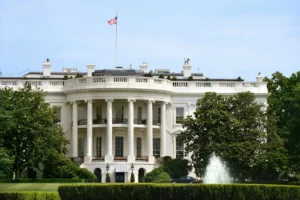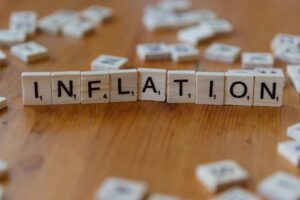By Tiffany Wilding and Allison Boxer, Economists at PIMCO
The central bank’s latest policy statement and Chair Jerome Powell’s remarks suggest that an initial interest rate cut could come as soon as September.
The Federal Reserve on Wednesday kept interest rates on hold, as expected, while making modest, dovish changes to its policy statement, setting the stage for a potential rate cut in September.
Still, Fed Chair Jerome Powell stopped short of signaling anything beyond September, instead emphasizing that policy committee discussions will be made meeting by meeting and will depend on the evolution of the outlook.
We have not changed our expectation for the Fed to cut rates in September and December this year. Recent good news on inflation – and importantly, confirmation of progress toward more moderate owner’s equivalent rent (OER) inflation in the second half of the year – as well as normalization in job vacancies, have increased our confidence that U.S. inflation will continue to moderate gradually.
As a baseline, we think Fed officials are planning to initiate rate cuts at a once-per-quarter pace, starting in September, continuing until policy is closer to neutral. That said, the U.S. election in November could be disruptive due to trade policy shifts that could weigh on growth and boost inflation. Given this uncertainty, the Federal Open Market Committee (FOMC) will likely want to cut rates gradually and respond to economic developments as they arise, and it will not want to pre-commit to a specific sequence of actions.
Dovish statement tilt
The Fed revised the language in its policy statement to convey two key points: (1) officials have growing confidence that inflation will at least land within a “two-point-something” zone, and (2) as a result, the risks to the Fed’s inflation and employment dual mandate are now much more balanced. Both changes signal the timing of rate cuts is drawing near but stop short of signaling anything about the pace of cuts after they commence.
The statement’s first paragraph acknowledged the recent sequence of better inflation prints – both on wages and prices – while noting that labor markets have continued to cool. The statement specifically mentioned moderating but still solid job gains. More important, in our view, but not explicitly mentioned: The ratio of vacancies to unemployment has completely recovered from the acute labor shortages of 2021 and 2022, signaling underlying inflationary pressure trends have moderated.
Both the cooling in the labor market and the resumption of progress on inflation, following what Fed officials have called a “bumpy” first quarter, argue for a more balanced risk outlook, suggesting that a gradual pace of rate cuts can soon commence.
Chair Powell’s comments
At the press conference following the statement’s release, Chair Powell acknowledged the recent good news on inflation and asserted that the labor market has returned to its pre-pandemic state and is likely no longer a big source of inflationary pressures. He argued that the FOMC shouldn’t overreact to a few good data prints. But he said that both he and the committee have gained confidence that inflation is on a sustainable path to return to 2%. As a result, officials are ready to begin adjusting policy to a slightly less restrictive level than it is today.
Chair Powell outlined the factors that the committee will consider in order to assess the appropriateness of rate cuts, stating:
“The question will be whether the totality of the data, the evolving outlook, and the balance of risks are consistent with rising confidence on inflation and maintaining a solid labor market. If that test is met, a reduction in our policy rate could be on the table as soon as the next meeting in September.”
Importantly, Chair Powell stopped short of signaling anything beyond September, instead emphasizing that the committee members “have made no decisions about future meetings.”
The outlook, including the impact of monetary policy, and the increasing uncertainty around fiscal policy in light of the U.S. presidential election, will be important factors that the Fed will have to continually weigh. As a result of these uncertainties, Powell stressed that decisions will be made on a meeting-by-meeting basis.
What’s the bottom line?
The Fed confirmed it is closer to commencing its first rate cut after a period of surging post-pandemic inflation led to one of the fastest, most aggressive hiking cycles in decades. Progress on inflation has continued and broadened after stalling earlier this year. Furthermore, labor markets appear to be back in balance after pandemic-related labor shortages had pressured wages higher.
These developments have contributed to the emergence of two-sided risks to the Fed’s dual mandate, rather than solely inflation risks, and will likely lead the Fed to cut rates several times, starting in September, at a measured pace over the next few quarters and beyond. Still, the outlook remains uncertain, with the U.S. presidential election and resulting political policy shifts adding to the uncertainty. Nevertheless, for now, the Fed must position its policy as best as it can amid the uncertainty. We think that means beginning to slowly adjust policy back toward neutral.







![[uns] house of commons, parliament](https://ifamagazine.com/wp-content/uploads/wordpress-popular-posts/788182-featured-300x200.webp)






